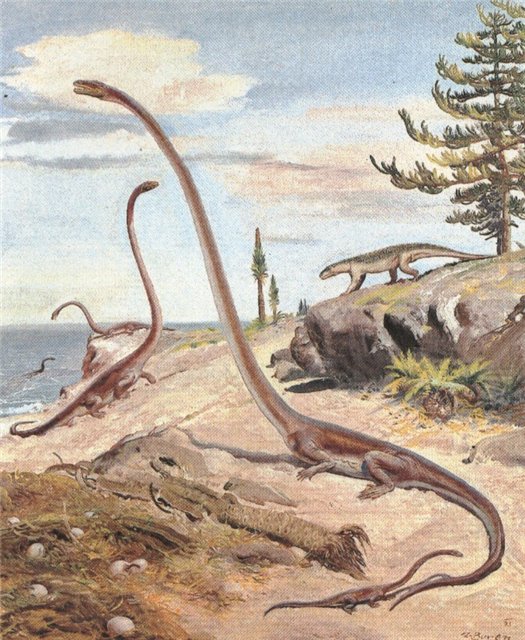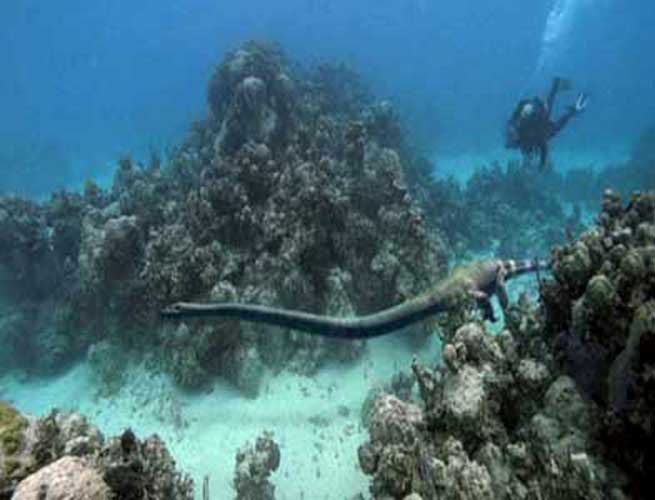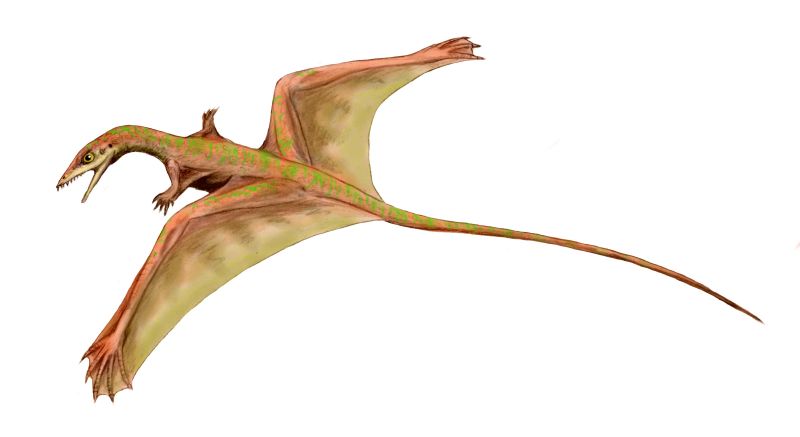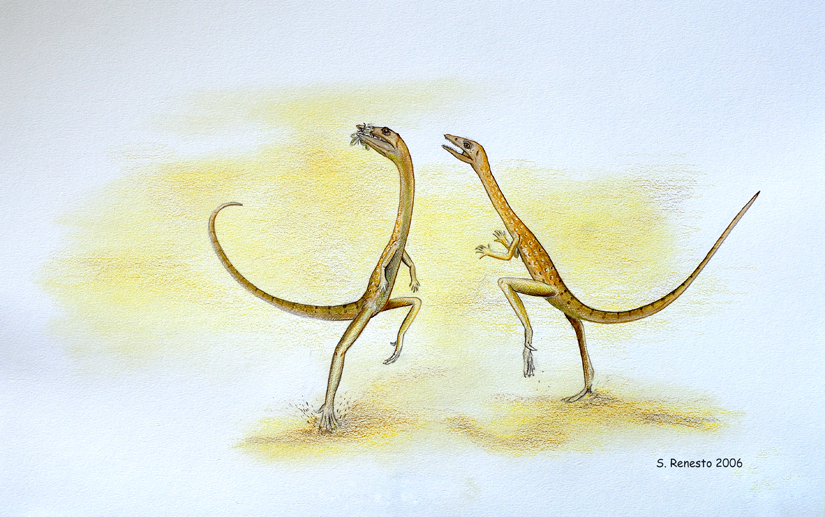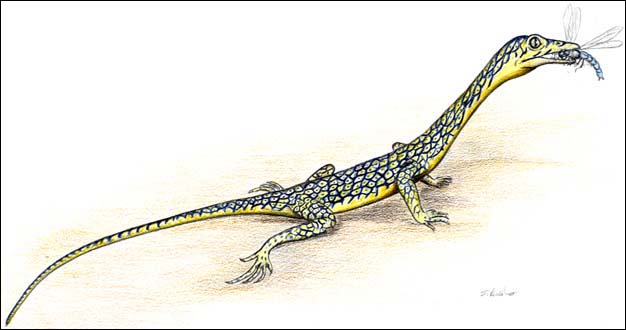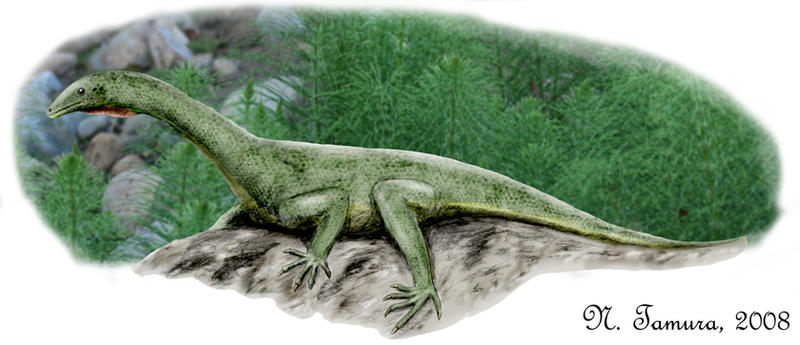[Recent Entries][Archive][Friends][User Info]
Below are the 6 most recent journal entries recorded in the "Сообщество, посвящённое ра" journal:| February 18th, 2012 | |
|---|---|
| 06:05 pm [industrialterro] [Link] |
Dinocephalosaurus Dinocephalosaurus — род вымерших проторозавров, семейства Tanystropheidae. Останки были найдены в 2002 году в геологической формации Guanling в провинции Гуйчжоу в Китае. Жил около 228 млн. лет назад в мелководных морях, питался рыбой и кальмарами. Обладал острыми клыками около 2 см в длину. Он был плохим пловцом и являлся засадным хищником. Благодаря мутной воде его было трудно увидеть потенциальной жертве. Кроме того, он атаковал с большого расстояния, перед атакой изгибая свою шею длиной 1,7 м и имеющую 25 позвонков. Затем он резко выпрямлял шею, одновременно раздвигая в стороны особые рёбра, растущие на шейных позвонках, расширяя шею и заглатывая ударную волну, которая могла бы предупредить жертву. Dinocephalosaurus is mostly closely compared with Tanystropheus, both being protorosaurs with necks twice as long as their bodies. While Tanystropheus's neck was composed of twelve elongated cervical vertebrae, Dinocephalosaurus's is from the addition of cervical vertebrae with a minimum of 25, giving the neck a length of ~1.7 m compared to a body length of about 1 m. The necks of both taxa are thought to have evolved convergently from each other. The use of the long neck in Tanystropheus is not fully understood, but it was used for prey capture in Dinocephalosaurus. Dinocephalosaurus differed from all other protorosaurs in the fact that it was the only one that was fully aquatic, but is thought to have laid its eggs on land. Where most protorosaurs had ossified limbs adapted for terrestrial life, dinocephalosaurus "retained juvenile characteristics in the adult stage, as in many other aquatic tetrapods.
Tags: Вымершие рептилии, Триас, архозавроморфы, диапсиды, проторозавры |
| 05:22 pm [industrialterro] [Link] |
Tanystropheus Танистрофей (Tanystrophaeus — длинная веревка ) — род ископаемых ящероподобных пресмыкающихся подкласса лепидозавров. Жили в среднем триасовом периоде. Длина тела до 5 м. Наряду с архаичными признаками (наличие теменного отверстия, расположения зубов не только в челюстях, но и на небе, двояковогнутые позвонки, наличие брюшных рёбер) были и характерные признаки своеобразной специализации (необыкновенно длинная и подвижная шея и другие). Обычное место обитание танистрофея — островки на мелководье. На земле он питался насекомыми и небольшими рептилиями, а погружая свою голову в воду, мог закусывать рыбешкой и моллюсками. Известно несколько видов Танистрофея из отложений в Западной Европе. Систематическое положение танистрофея окончательно не установлено. Свое название он получил еще в 1852 году («tany» — означает «длинный», «strophos» — «веревка», «ремень») из-за удивительной гипертрофированной шеи, которая составляла большую часть 5-6-метровой длины животного и позволяла ему незамеченным приближаться к добыче, «выуживая» ее из-за каких-нибудь кустов.
Репродукции (1, 2, 3, 4, 5, 6, 7, 8, 9, 10, 11, 12):
( Далее )
Tags: Вымершие рептилии, Триас, архозавроморфы, диапсиды, проторозавры |
| February 17th, 2012 | |
| 05:33 pm [industrialterro] [Link] |
Sharovipteryx Шаровиптерикс, шаровиптерикс удивительный, подоптерикс — (Sharovipteryx mirabilis = Podopteryx preoccupied) — ранняя планирующая рептилия, относится к среднему-позднему триасу (230—225 миллионов лет назад). Назван в честь нашедшего его палеонтолога А. Г. Шарова. Известен по одной единственной окаменелости, найденной в ущелье Мадыген, Ферганская долина. По этой причине предполагается, что обитал на территории современной Средней Азии. Был приблизительно 20 см длиной, с очень длинным хвостом, весил примерно 7,5 грамм. Между задними ногами имелась широкая кожная складка, играющая роль парашюта и частично несущей поверхности при прыжках. Возможно являлся близким родственником, или даже предком птерозавров, хотя это остается спорным. В отличие от птерозавров, его основная перепонка для полета была натянута между его длинными задними конечностями, а не короткими передними. Ещё предполагается что эта рептилия была четырёхкрылой. Животное sharovipteryx mirabilis известно по единственной окаменелости. Длина рептилии составляла 20,5 сантиметра, а вес - менее 50 грамм. Учёные знали, что между её задних конечностей присутствовала мембрана, которая позволяла ей планировать, однако форма этого образования долгое время служила причиной для дебатов. Палеонтолог Гарет Дайк из Ирландии и его коллеги использовали во время исследования формы мембраны sharovipteryx mirabilis аэродинамические данные полёта современных летающих рептилий, а также компьютерную модель. Это создание стало первым известным науке позвоночным, у которого большая часть мембраны натянута между задними конечностями. Теперь, видимо, оно станет первым животным с дельтавидной формой крыла. Данные, полученные учёными, также помогут лучше понять пути развития птерозавров. По словам исследователей, такая конфигурация мембраны наиболее эффективна при высокой скорости полёта. Передние конечности рептилии, скорее всего, служили каркасом для "закрылок". Учёные говорят, что они помогали животному набирать или снижать высоту. "Руки" рептилии, остававшиеся относительно свободными во время полёта, позволяли ей хватать добычу. По мнению специалистов, животное изменяло скорость, регулируя размах крыльев. If Sharovipteryx was a relative of pterosaurs, then its membrane may have stretched to its front legs, or it may have had a separate membrane joined to its front limbs alone. A secondary membrane is visible between the thighs and the trunk. Front wing membranes have not been seen; Peters (2006) has claimed to have traced the fingers and that they show similarities to Cosesaurus and Longisquama and to a lesser extent, pterosaurs. Some scenarios have it as a leaping animal, which would spring up in the air and then control its fall with its "wings". This fits well with the belief that pterosaurs evolved from running, leaping ancestors, because some scientists believe they lacked adaptations for living in trees. However, others suggest that Sharovipteryx would run up a tree on its sharply clawed rear legs (its overall design seems poor for climbing), and then spring into the air. The forelimbs seem too short for quadrupedal running or climbing. Such a configuration was probably necessary in order to free the forelimbs from the task of walking and allow them to become something else.
Репродукции (1, 2, 3, 4, 5, 6, 7, 8):
( Далее )
Tags: Вымершие рептилии, Триас, архозавроморфы, диапсиды, проторозавры |
| February 16th, 2012 | |
| 08:41 pm [industrialterro] [Link] |
Macrocnemus Macrocnemus is an extinct genus of prolacertiform reptile from the Middle Triassic of Europe. Two species have been named, the type species M. bassanii and the species M. fuyuanensis. Macrocnemus bassanii (Nopcsa 1931) Ladinian, Middle Triassic ~220mya, is known from several specimens ranging in size and varying in morphology. Romer (1970) considered Macrocnemus a lepidosaur. Carroll (1988) placed it with Protorosaurus and Prolacerta, which is where most current workers consider it, but that would be an error. Here, following a larger phylogenetic analysis, Macrocnemus is derived from a sister to the basal lizard, Huehuecuetzpalli. The smallest Macrocnemus, BES SC 111, is also the most primitive. Larger species are considered below. As in HuehuecuetzpalMacrocnemus bassanii (Nopcsa 1931) Ladinian, Middle Triassic ~220mya, is known from several specimens ranging in size and varying in morphology. Romer (1970) considered Macrocnemus a lepidosaur. Carroll (1988) placed it with Protorosaurus and Prolacerta, which is where most current workers consider it, but that would be an error. Here, following a larger phylogenetic analysis, Macrocnemus is derived from a sister to the basal lizard, Huehuecuetzpalli. The smallest Macrocnemus, BES SC 111, is also the most primitive. Larger species are considered below. As in Huehuecuetzpalli, this clade practices isometric growth, so all morphological differences are indeed valid traits, not signs of immaturity within a single genus or species. BES SC 111 (Renesto & Avanzini 2002) ~30 cm, was previously described as a juvenile, but has a tooth count a third higher than in the larger T4822. Phylogenetically it appears at the base of a clade that includes all the larger specimens of Macrocnemus, which in turn lead to Tanystropheus, Dinocephalosaurus and Langobardisaurus + Tanytrachelos. BES SC 111 also leads to Jesairosaurus and Cosesaurus. Distinct from Huehuecuetzpalli, the rostrum was further elongated, the postorbital portion was shortened and the jugal produced a quadratojugal process. The teeth were all small, numerous and in contact with one another. The maxilla was nearly as tall as the orbit. The cervicals series of eight was robust and elongated, clearly distinct from the dorsals. All neural spines were short. Only two sacrals were present, but adjoining vertebrae had broad transverse processes. The chevrons were further reduced and many were appressed to their centrum. Gastralia were present. The coracoid and scapula had no fenestrations and the short scapula had a posterior lean. The two centrale appear to have migrated to the medial carpus but remain posterior to distal carpal I. Manual digit V was shorter than metacarpal IV.
Tags: Вымершие рептилии, Триас, архозавроморфы, диапсиды, проторозавры |
| 08:23 pm [industrialterro] [Link] |
Malerisaurus Malerisaurus is an extinct genus of prolacertiform archosauromorph known from Andhra Pradesh of India and Texas of the USA. Malerisaurus is known from the holotype ISIR 150, two articulated and almost complete skeletons which were discovered as the presumable gastric contents of two skeletons of Parasuchus hislopi. It was collected from the Lower Maleri Formation, dating to the late Carnian or early Norian stage of the Late Triassic. Malerisaurus robinsonae was a small archosauromorph, probably capable of climbing trees and swimming. The skull has some adaptations to a carnivorous diet, but is nevertheless unspecialised and probably more of an insectivore. Malerisaurus, seen as a diapsid skull, shows primitive and advanced facies in its unossified laterosphenoid, absence of antorbital and mandibular fenestrae, gracile form, primitive girdles, elongated cervicals and absence of dermal armour. The suborder Prolacertiformes currently represents four families: Sharovipterygidae, Protorosauridae, Prolacertidae and Tanystropheidae. Chatterjee provisionally regarded Malerisaurus as close to Protorosaurus. A second species, M. langstoni, is known from the holotype TMM 31099-11, a partial but poorly preserved skeleton. It was collected in the Otis Chalk Quarry 2 (TMM 31099 locality) from the Colorado City Formation, Chinle Group, dating to the early Carnian stage of the Late Triassic, about 228-227.5 million years ago. It was found in the Howard County of Texas.
Tags: Вымершие рептилии, Триас, архозавроморфы, диапсиды, проторозавры |
| December 7th, 2011 | |
| 08:31 pm [industrialterro] [Link] |
Protorosaurus Protorosaurus ("first lizard"), a lizard-like reptile of the order Prolacertiformes, is the earliest known archosauromorph. It lived during the Late Permian period in Germany. In 1914, a new ceratopsian dinosaur found by Lawrence Lambe was again given the name Protorosaurus (in this sense meaning "before Torosaurus"). When Lambe found that the name had already been used for the early archosauromorph, he re-named his ceratopsian Chasmosaurus. In Geopark of Paleorrota, Rio Grande do Sul, Brazil, were found 3 vertebrae and some bones of the animal. Protorosaurus grew up to 2 metres (6.6 ft) in length, and was a slender, lizard-like animal, with long legs and a long neck. Its body form suggests that it was fast-moving, although it may have fed primarily on insects. Protorosaurus was closely related to Czatkowiella from the Early Triassic of Poland. Протороза́вры (Prolacertiformes) — отряд рептилий из группы диапсид (Diapsida), которые жили во время пермского и триасового периодов. В эту группу входили как планирующие виды, приспособленные для древесной жизни, например шаровиптерикс (Sharovipteryx), так и виды, имевшие длинную шею и, возможно, бывшие хотя бы частично водными, например танистрофей (Tanystrophaeus). Некоторые рептилии иногда классифицируются как проторозавры: Drepanosaurs, лонгисквама (Longisquama insignis) и птерозавры (Pterosauria).
Tags: Вымершие рептилии, Пермь, архозавроморфы, диапсиды, проторозавры |







